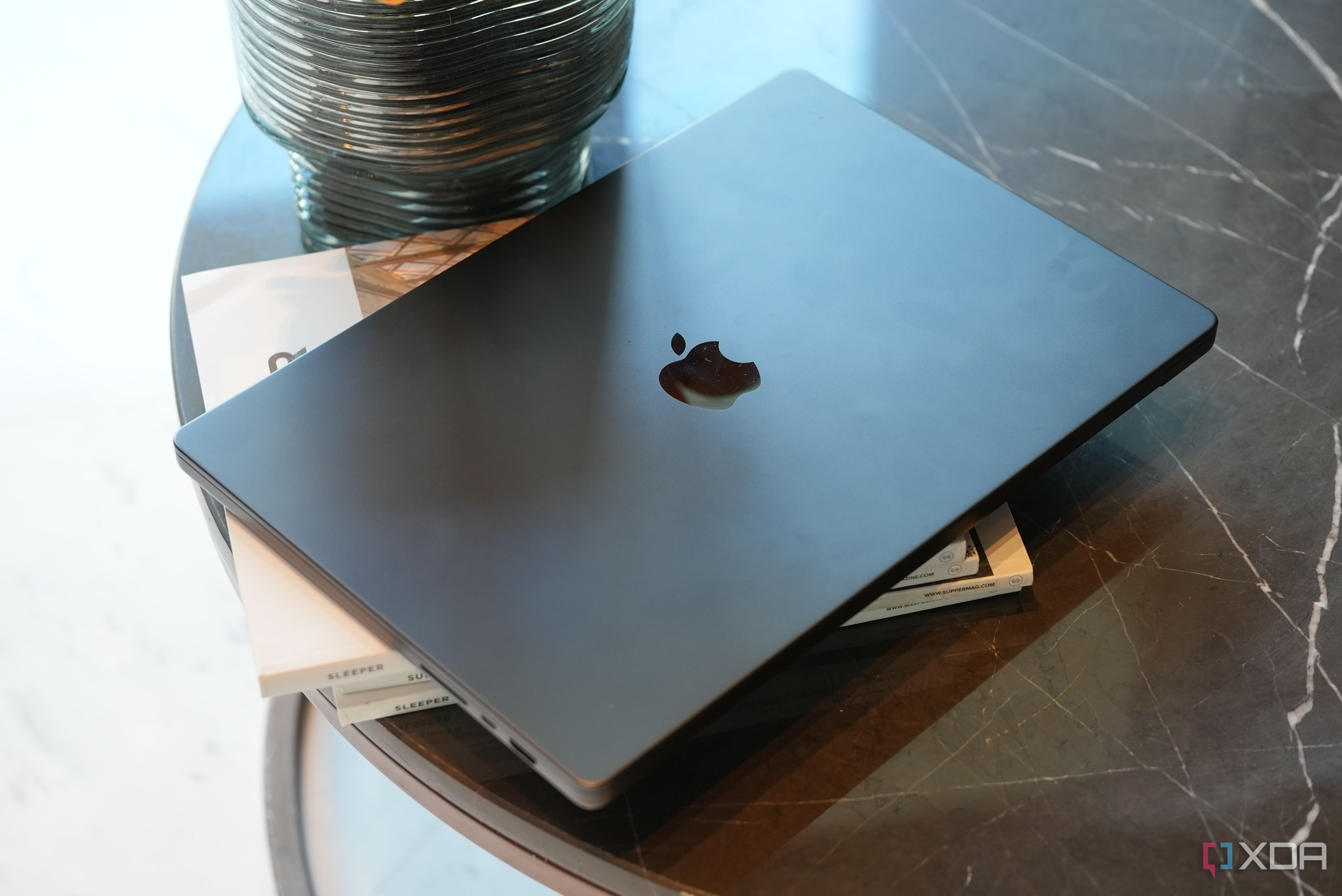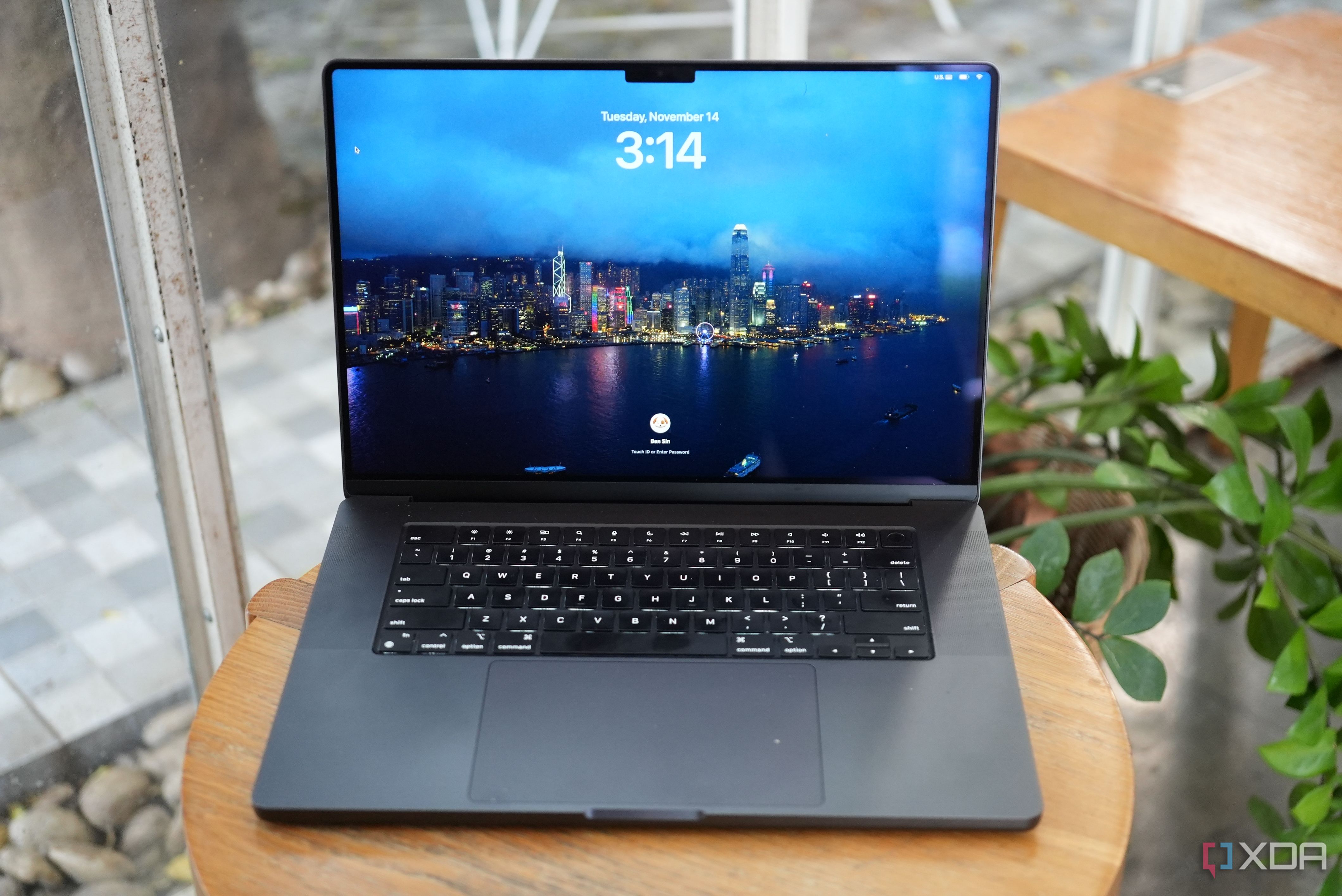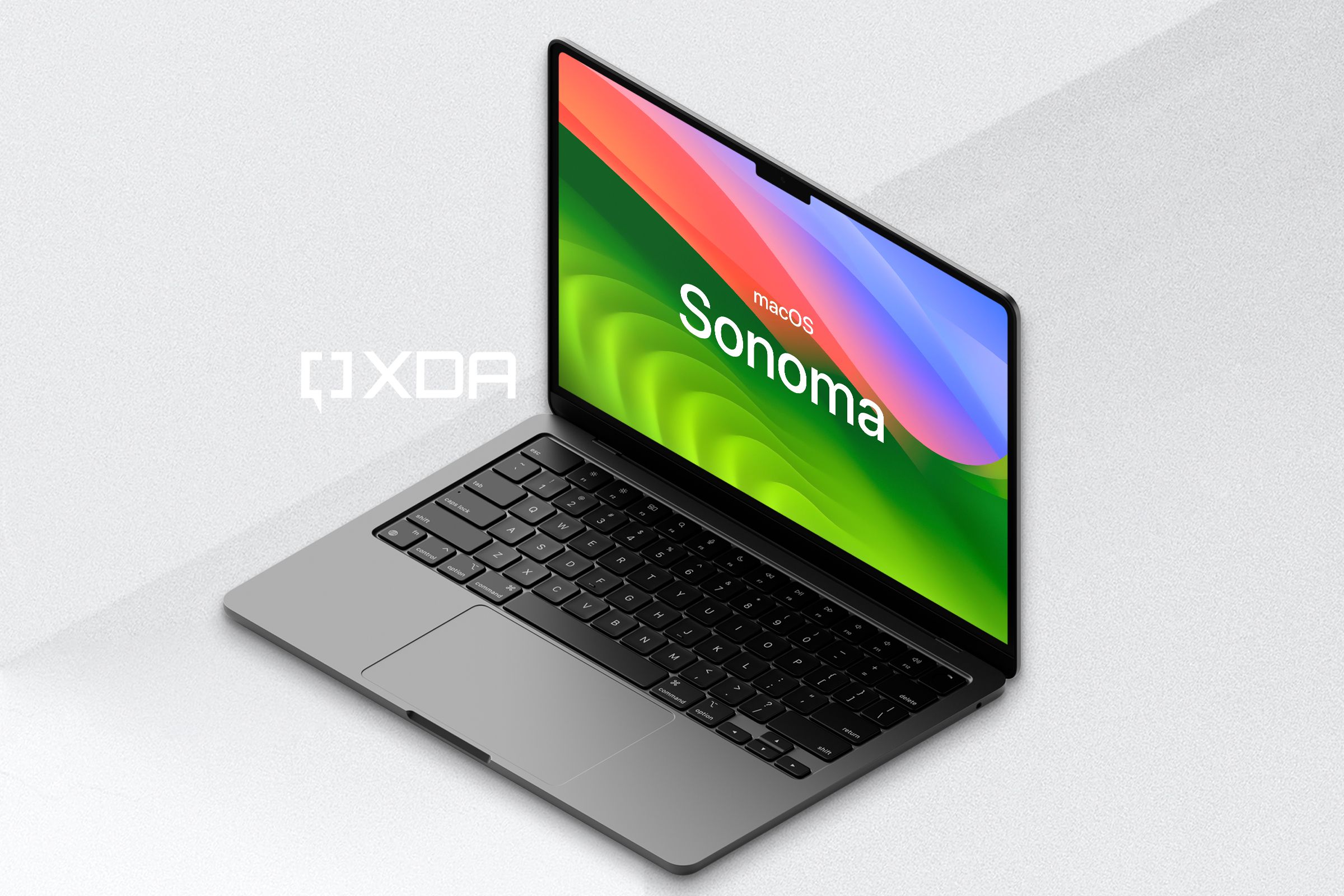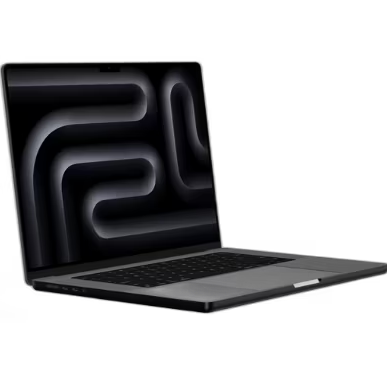Apple’s new M3-powered MacBook Pros have had quite an odd release. They were announced at an online-only event in the evening hours of a U.S. workday and just 10 months after the M2 Max MacBook Pro first hit the market, so many people are curious about Apple’s strategy here.
Some insiders speculate that Apple pushed these new laptops when it did to help boost slowing MacBook sales just ahead of the holiday period, while others think it was to combat Qualcomm’s Snapdragon X Elite announcement. No one will know for sure, given the Cupertino firm’s tendency to keep things close to the chest, but regardless, these new M3 chip MacBooks are very capable machines, with the highest-tier 16-inch M3 Max MacBook Pro I’m testing almost complete overkill for most people. It’s easily among the best laptops money can buy right now, and creative professionals who already swear by Apple’s machines will have even more to love. But this thing is very, very expensive, so it’s definitely not for most people.
About this review: Apple provided me with a 16-inch M3 Max MacBook Pro for review. The company did not have input in this article.

MacBook Pro M3 Max 16-inch
The most powerful laptop gets better
Apple’s new laptop comes in a new color and has a slightly brighter screen. Most importantly, you’ll get a new 3nm M3 Max chip, with up to a 16-core CPU for one of the most powerhouse machines on the market.ÂÂ
Operating System
macOS Sonoma
RAM
48GB, 64GB, 128GB (unified)
Storage
1TB to 8TB
Battery
96Wh
Display (Size, Resolution)
16.2-inch, 3456×2234 16:10, 120Hz Liquid Retina XDR display
Camera
1080p
Speakers
Six-speaker system
Colors
Spacy Black, Space Grey
Ports
USB-C (X4), HDMI, micro-SD, headphone jack, MagSafe
Dimensions
14.01 x9.77×0.66 inches
Weight
4.8 pounds (2.2kg)
Display type
Mini-LED
Pros
- Really, really powerful and efficient
- The best speakers I’ve heard from any portable device
- GPU features hardware-assisted ray tracing
Cons
- Very pricey
- Feels like it’s coming too soon ? the M2 Max is just 10 months old
- Can’t upgrade the machine like you could some Windows laptops
Pricing and availability
The 16-inch MacBook Pro with M3 Max is just one of several MacBook Pro variants Apple launched this month. The M3 Max model also comes in a smaller 14-inch size, and the 16-inch machine can also be paired with a lower-tier M3 Pro chip. There’s also a standard M3 chip in the 14-inch size. All of these devices are on sale now at retailers across the globe.
The 16-inch M3 Max model starts at $3,499 for 48GB of unified memory and 1TB of storage. The model I’m testing is the highest configuration available: 128GB unified memory with 8TB of storage, and retails for $7,199.
Design and hardware
It’s a MacBook Pro, so you know how it looks and feels

Other than the new Space Black color (which looks like deep gray) and a slightly brighter display (600 nits, up from 500 nits last generation), the outer appearance of the 2023 16-inch MacBook Pro remains unchanged from what you’re used to. It’s an aluminum unibody clamshell laptop with flat sides. It’s still a chunky guy, measuring 0.66 inches thick and weighing 4.8 pounds, but considering how much power this thing packs, the heft is justified.
Unless you live a very insular lifestyle, you’ve surely seen this overall design language and form factor. Besides the coating being a bit daker than usual, there’s nothing new to see here.
The six-speaker system is so good I stopped using my wireless Bluetooth speaker at home.
The display, which Apple calls Liquid Retina XDR, is a 120Hz, 3456×2234 Mini-LED panel that looks great, covering 100% of the P3 color gamut, though Apple’s TrueTone technology (which alters display color temperature to match the ambient light) does mean the color shifts more than most other screens, and usually appears warmer. (You can turn this off, of course.) The Mini-LED tech is unchanged from the last two generations as well, meaning the blacks here are deeper than LCD screens but not quite on OLED’s level. It still looks mostly great to my eyes, with the only eyesore coming in the form of the notch, which houses a solid, if unspectacular, 1080p webcam.

The hinge is still excellent, too. It’s fluid enough that you can open the laptop lid with one finger, but polished enough that the lid does not wobble even if I’m pounding on the keyboard on a wobbling table. The ports are also identical, with three USB-C Thunderbolt 4 ports (all can charge the laptop or output display), a MagSafe charging port, a headphone jack, an HDMI port, and a micro-SD card slot.
The trackpad, keyboard, and speakers are also all unchanged, and they’re among the best in the laptop space, with the speakers being head and shoulders above the competition. The trackpad is large and responsive, the keys offer solid travel and are backlit, and the speakers … oh man. I have basically stopped using my wireless Bluetooth speaker at home ever since the M1 Max MacBook Pro brought theirs into my life.

Performance
The GPU boost makes a difference
So yeah, there’s not much new when it comes to the MacBook’s outside. But the inside? That’s where the M3 Max comes in. Built on 3nm architecture, the M3 Max comes with either a 14-core or 16-core CPU with a 30- or 40-core GPU. This means the CPU gains four extra cores over last generation’s M2 Max.
However, it’s the GPU that got the bigger upgrade: it supports hardware-accelerated ray-tracing and mesh-shading, technology used to improve graphical performance. There’s also dynamic caching, which allocates system memory to the GPU in real-time based on demands. In other words, the big upgrade with the M3 Max is with graphical performance.
My machine pairs the M3 Max with a maximum 128GB of unified memory, and the benchmark numbers are, as expected, impressive. I must concede I do not test a lot of Windows machines, so my personal point of comparison is other Macs, but I have pulled benchmark numbers tested by my colleagues, which also include the Snapdragon X Elite SoC that’s meant to compete against Apple’s Silicon.
| GeekBench 6 |
CrossMark |
CineBench R23 |
|
| M3 Max MacBook Pro (16-core, 128GB memory) |
3,178 (single-core); 21,284 (multi-core) |
1,993/1,771/2,500/1,438 |
1,900 (single-core); 23,962 (multi-core) |
| M2 Max MacBook Pro (12-core, 96GB memory) |
2,770 (single-core); 14,451 (multi-core) |
1,876/1,609/2,437/1,356 |
1,645 (single-core); 14,751 (multi-core) |
| M2 Ultra Mac Studio (24-core, 128GB memory) |
1,914 (single-core); 18,609 (multi-core) |
1,603/1,501/18,923/1,188 |
1,743 (single-core); 28,730 (multi-core) |
| Snapdragon X Elite (Demo unit) |
2,956 (single-core); 15,226 (multi-core) |
Did not test |
1,704 (single-core); 14,752 (multi-core) |
| Lenovo ThinkPad X1 Nano Gen 3 (Intel Core i7-1360P/16GB) |
2,554 (single-core); 11,334 (multi-core) |
1,748/1,666/1,951/1,450 |
Did not test |
Benchmarks are ultimately just numbers, but I’m happy to report that the machine performs in real life too. I’d describe my computer usage as above the average person (I edit photos and videos on my machine, not just type or read words) but not quite a creative professional level (I don’t always color grade my video footage, for example).
There was nothing I could do to slow down the machine. I would have Final Cut Pro, Adobe Lightroom, Chrome with a dozen tabs, Slack and Spotify running simultaneously, and then jump through all the windows without even a split second of wait time. I immediately hop into Final Cut Pro and start scrubbing through the timeline with the video playing. Jump back to Chrome, and even the tab I had opened yesterday opens up without reloading.
For video editing on Final Cut Pro, the machine can basically export multi-track 10-minute 4K/30 video in a little over four minutes. I often put together shorter 60-90-second vertical videos now at 1080p resolution, and those clips export in single-digit seconds. All the while, I never hear the MacBook fan, nor does the machine get too warm. It’s insanely efficient.
If you use Final Cut Pro, export times on the M3 Max are jaw-droppingly fast.
I also ran my usual 8K video export test, where I put four 60-second long 8K footage on a timeline and exported. We can see that Apple’s silicon still plays much nicer with Apple’s own software than third party software, but the portable M3 Max machine can now keep up with the deskbound M2 Ultra Mac Studio. If you use Final Cut Pro, export times on the M3 Max is just jaw-droppingly fast.
| 8K video export time |
Final Cut Pro |
Adobe Premier Pro |
| M3 Max MacBook Pro (16-core, 128GB memory) |
1:03 |
10:50 |
| M2 Max MacBook Pro (12-core, 96GB memory) |
1:37 |
13:47 |
| M2 Ultra Mac Studio (24-core, 128GB memory) |
0:57 |
10:36 |
Gaming is much bigger of a deal

Apple has made a more serious push into gaming on the Mac in the past year, and the M3 Max’s GPU improvements and partnerships with game studios like Capcom to port AAA titles over to macOS will likely keep the momentum going. I tested Shadows of the Tomb Raider, which ran at nearly 120FPS the whole time with the machine plugged in. When I run on battery power, the framerate dips to the high 90s or low 100s, but the graphics still looked great.
I also played NBA 2K24 Arcade Edition and was surprised by how well the game ran. I grew up with the NBA 2K series, and I upgraded every year until I quit gaming about 10 years ago to focus on work and adult life. Having NBA 2K available on a portable machine may very well bring back the hobby I gave up a decade ago.
Battery life on the MacBook Pro has also been great. For basic productivity tasks involving reading or writing words, the machine got close to 17 hours on a single charge. For more intensive tasks, like editing videos, I noticed that a two-hour editing session drained about 40% battery, which means this machine could handle Final Cut Pro for at least four hours, which is very, very good. Most Windows laptops would not be able to edit videos for more than two hours.
Software
The MacBook looks more like an iPhone than ever

My machine shipped with macOS Sonoma 14.1.1, which has a slightly modified look to look more in line with iOS and iPadOS. Windows have rounded corners, and the all-new lockscreen looks just like an iPhone lockscreen, with the wallpaper and clock taking center stage and the user login information made smaller and shoved to the bottom. There’s also a large selection of wallpapers offered by Apple that are hi-res enough to allow the MacBook lockscreen to slowly zoom into the wallpaper. I chose one of the Hong Kong skyline, which gives me a sense of nostalgia every time I flip open the laptop lid.

There are more widgets, and some are interactive, allowing me to tap on the the widget to make changes directly on the widget instead of opening the app. You can also place iOS widgets on the MacBook without installing those same apps on the MacBook (some of these apps do not exist on macOS anyway).
For me, macOS is still a joy to use because animations are fluid, the trackpad is responsive, and it plays so nicely with the iPhone, iPad, and AirPods.
Should you buy the M3 Max MacBook Pro?
You should buy the M3 Max MacBook Pro if:
- You are a creative professional who wants a portable machine that can handle your workload
- You are on an Intel MacBook looking to upgrade
You should not buy the M3 Max MacBook Pro if:
- You are on an M2 Max MacBook Pro already
- You do not need to do video or graphics work
The M3 Max MacBook Pro is a very powerful laptop that can handle almost anything most people throw at it. But it’s also very pricey, with a starting price of $3,500. This machine is ideal for people who will genuinely need the horsepower, like video content creators or graphics artists. For everyone else, they should opt for the base model M3 or M3 Pro.
I also think those who are on an M2 Max machine should not upgrade, as the improvements, while noticeable, aren’t really big enough to justify a new purchase. I think even the M1 Max machine holds up very well today so I’m inclined to say they don’t need to upgrade either. But for people jumping over from an Intel  oh man, be prepared to say “wow†when you notice the improved power and battery efficiency.
The M3 Max MacBook Pro is a chip that really didn’t need to come out right now  the M2 Max MacBook Pro is still beating 99% of computers out there. Whether this silicon and machine were rushed out to help boost slowing MacBook sales or to counter Qualcomm is up for debate, but this machine is a flex.


MacBook Pro M3 Max 16-inch
The most powerful laptop gets better
Apple’s new laptop comes in a new color and has a slightly brighter screen. Most importantly, you’ll get a new 3nm M3 Max chip, with up to a 16-core CPU for one of the most powerhouse machines on the market.ÂÂ
** (Disclaimer: This video content is intended for educational and informational purposes only) **
More...

